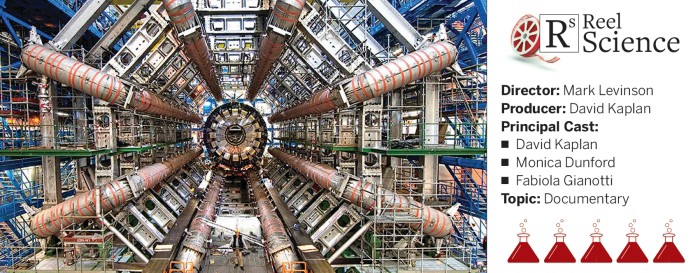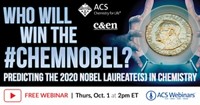Advertisement
Grab your lab coat. Let's get started
Welcome!
Welcome!
Create an account below to get 6 C&EN articles per month, receive newsletters and more - all free.
It seems this is your first time logging in online. Please enter the following information to continue.
As an ACS member you automatically get access to this site. All we need is few more details to create your reading experience.
Not you? Sign in with a different account.
Not you? Sign in with a different account.
ERROR 1
ERROR 1
ERROR 2
ERROR 2
ERROR 2
ERROR 2
ERROR 2
Password and Confirm password must match.
If you have an ACS member number, please enter it here so we can link this account to your membership. (optional)
ERROR 2
ACS values your privacy. By submitting your information, you are gaining access to C&EN and subscribing to our weekly newsletter. We use the information you provide to make your reading experience better, and we will never sell your data to third party members.
Analytical Chemistry
‘Particle Fever’
Film documents the construction of the Large Hadron Collider and the discovery of the Higgs boson
by Mitch Jacoby
March 17, 2014
| A version of this story appeared in
Volume 92, Issue 11

It isn’t easy making big physics come alive on the big screen. But director Mark Levinson and producer David Kaplan, both trained as particle physicists, do it brilliantly in “Particle Fever,” which opens this month at select theaters across the U.S. and Canada.
The film tells the story of the development and start-up of the Large Hadron Collider (LHC), the giant particle accelerator housed near Geneva by the European nuclear organization known as CERN, through the eyes of a handful of physicists intimately involved with LHC and subatomic physics.
Setting the tone for the unparalleled significance of the massive physics project, Kaplan, a Johns Hopkins University academic, remarks in an opening scene, “Ever since I entered physics, people have been talking about this machine, the biggest machine ever built by human beings.”
Through awe-inspiring videography that captures the colossal size of LHC’s 17-mile-long accelerator ring and stories-tall particle detectors, “Particle Fever” effortlessly drives home the sheer enormity of the project. And through simple, easy-to-follow language, generally presented as conversation, the film brings across the unmatched significance to science of the LHC experiment and its results.
Everything about LHC is big. From its physical dimensions, electronic complexity, price tag, and staff (roughly 10,000 scientists from more than 100 countries), to its aims of simulating Big Bang-like conditions, to its search for the Higgs boson and other critical secrets of nature, the project is big physics at its biggest.
“Particle Fever” pulls the viewer onto the emotional roller coaster ridden by a handful of likable physicists as LHC nears its first major operations test in September 2008. Press coverage at that time was intense.
“Nothing like the LHC has ever happened,” says Nima Arkani-Hamed, a young, hip, gym-shoes-and-jeans-wearing theoretician from the Institute for Advanced Study, in Princeton, N.J., in a scene filmed at that time. Arkani-Hamed, who is regarded as one of this generation’s leading particle physicists, adds: “All the superlatives are justified. This is a case where the hype is approximately accurate.”
By using that kind of chat-over-coffee tone, Arkani-Hamed, Kaplan, and a few other physicists, including American postdoc Monica Dunford and Fabiola Gianotti, one of LHC’s project leaders, make it clear that the scientific stakes are huge. They explain that if the experiment proves that the Higgs boson, which was postulated in 1964, doesn’t actually exist, then there is something deeply wrong with scientists’ understanding of the fundamental nature of matter.
There are no surprises in the film. The outcome of every major LHC milestone is well documented. Yet it is genuinely exciting to experience the suspense that the physicists experience as they wait for confirmation that the machine has successfully sent a single beam of protons ripping through the accelerator at roughly the speed of light.
Emotions skyrocket at the success but soon plummet as a massive equipment failure forces a two-month shutdown. The ups and downs continue, and the viewer rides along, until March 2010 when the team attempts the first real experiment—repeated collisions between two counter-circulating speed-of-light proton beams.
Data! Copious amounts of experimental data emerge for the first time since LHC was planned in the 1990s. We know what follows. The researchers work feverishly for two years, running experiments and analyzing data. Finally, in July 2012, the LHC team announces that they have confirmed the existence of the Higgs boson. The discovery sets the stage for the next round of big experiments.
In addition to being educational and accessible to nonscientists, “Particle Fever” is exciting and just plain fun to watch. As of now, it is scheduled to run for just a short time. Don’t miss it.




Join the conversation
Contact the reporter
Submit a Letter to the Editor for publication
Engage with us on Twitter